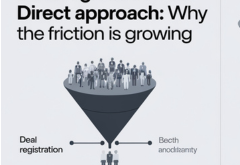Akamai Technologies has released its latest State of the Internet (SOTI) report titled ‘Navigating the Rising Tide: Attack Trends in Financial Services.’ The report reveals that for the second consecutive year, the financial services industry remains the top target for Layer 3 and 4 distributed denial-of-service (DDoS) attacks, accounting for 34% of such incidents globally. Other heavily targeted sectors include gaming at 18% and high technology at 15%.
Financial institutions, that handle vast amounts of sensitive data and high-value transactions, are especially vulnerable to these attacks due to the significant potential for disruption. Layer 3 and Layer 4 DDoS attacks overwhelm network infrastructures, depleting server resources and bandwidth. The effects of a successful attack on financial institutions can be severe, leading to downtime, customer distrust, and potential regulatory repercussions. Attackers exploit this high-stakes environment to inflict maximum damage.
The report highlights that the rise in DDoS attacks is fueled by ongoing geopolitical tensions, which have triggered a surge in hacktivist activities. Prominent threat actors like REvil, BlackCat (ALPHV), Anonymous Sudan, KillNet, and NoName057, often associated with the Russia-Ukraine conflict, are identified as key perpetrators. Additionally, the report examines how major cyberattacks on global financial institutions have coincided with the Israel-Hamas conflict.
Key Findings:
- Brand Impersonation and Abuse: Financial services experience the highest rates of brand impersonation, with 36% of suspicious sites targeting the sector, significantly more than the next most targeted industry, commerce, at 26%.
- Phishing Attacks: Phishing continues to dominate the counterfeit domains aimed at financial services, accounting for 68% of all cases, followed by brand impersonation at 24%.
- API Vulnerabilities: Akamai observed a notable increase in Layer 7 DDoS attacks targeting applications through APIs. Unprotected shadow APIs, which security teams may be unaware of, are particularly vulnerable, allowing attackers to steal data, bypass authentication, or carry out disruptive activities.
- DDoS Event Frequency and Intensity: The report shows that while the number of DDoS events fluctuates, the traffic volume during some attacks surges dramatically, underscoring the importance of monitoring both frequency and scale when assessing DDoS threats.
Steve Winterfeld, Advisory CISO at Akamai, emphasized the critical nature of these findings: “Cybercrime poses a significant risk to the financial services sector, causing widespread disruptions and economic damage. This report helps cybersecurity professionals better understand the increasingly complex threat landscape and offers best practices to protect their customers.”
APJ Region Faces Heightened Cybersecurity Risks
The Asia-Pacific and Japan (APJ) region stands out for its unique cybersecurity challenges. The region, characterized by its mix of developed and developing economies, has become a prime target for cybercriminals. The report notes that APJ received the highest median threat score for phishing, despite having fewer phishing or brand impersonation domains than other regions. This suggests that consumers in APJ are particularly vulnerable to having their banking information stolen when visiting suspicious websites.
While the financial sector in APJ has rapidly embraced digital technologies, its cybersecurity defenses lag behind those of Europe and North America. The region’s high levels of digital adoption and social media engagement expose financial institutions to increased risks of phishing and impersonation attacks.
Reuben Koh, Director of Security Technology & Strategy for APJ at Akamai, remarked, “The reliance on digital supply chain vendors among Indian financial organizations has introduced new risks. For example, a recent ransomware attack on a major Indian fintech company disrupted payment services for hundreds of banks across the country. The new India Digital Personal Data Protection Act (DPDP) also forces financial organizations to reassess their data management strategies, particularly as emerging technologies like AI and APIs become more widespread.”
The report also features contributions from FS-ISAC, a case study on credential stuffing, and insights on DDoS attack intensity and regional trends. It explores strategies like Zero Trust and micro-segmentation to help organizations defend against cyberattacks.
As Akamai marks the 10th anniversary of its State of the Internet reports, this latest edition offers expert analysis based on data from the Akamai Connected Cloud, providing valuable insights into the evolving cybersecurity landscape.
 Latest Technology News Today – Get Latest Information Technology Updates and Services Latest Technology News Today – Get Latest Information Technology Updates and Services
Latest Technology News Today – Get Latest Information Technology Updates and Services Latest Technology News Today – Get Latest Information Technology Updates and Services 









